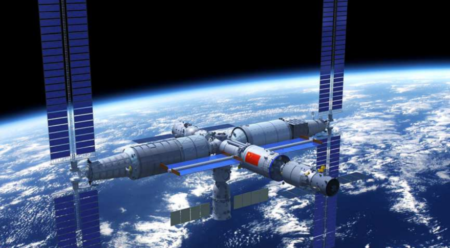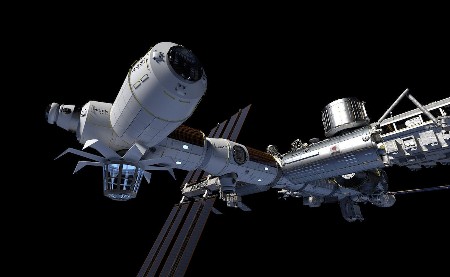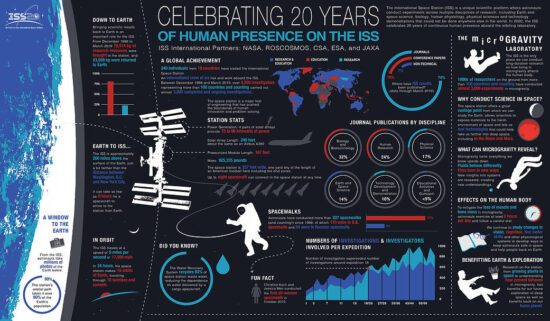I was 12 when Yuri Gagarin flew into space. Sixty years later hundreds of our species plus chimpanzees, dogs, insects, fish, and a myriad of other fauna and flora have left the bounds of Earth temporarily to learn how life can survive and adapt beyond the protective envelope of our planet.
The Soviet Union (later Russia), America, and China have served as the launching point for human exploration of near space. Twelve walked on the Moon with the last mission ending almost fifty years ago. The International Space Station, ISS, a permanently occupied laboratory in low-Earth orbit was formally announced in 1984 with assembly beginning sixteen years later. The first occupants, a crew of three, flew to the ISS in the fall of 2000. It has been continually inhabited ever since with 241 individuals making ISS their temporary home. It took ten years and 30 missions to assemble all of the components at a cost of $150 billion USD. Having passed the two-decade mark, how much longer can the ISS last? The current end-of-mission date is 2024, but that is likely to be extended to 2028 with rigorous maintenance that has become an ongoing exercise for those onboard.
There have been other space stations. The Soviet Union’s MIR, and NASA’s Skylab. And China has also launched modules to serve as temporary space stations, that is, until now with Tiangong, a multi-module orbiting laboratory that received its first crew of three this week. Tiangong will require 12 missions to complete its construction and will be about 20% of the mass of the ISS. The plan is to house a maximum of 6 with missions extending between three and six months. China hopes to have the station completed within 24 months. No timeline on its durability has been announced.

Meanwhile, Russia has suggested that its participation in the ISS may not continue beyond 2024. The country’s space program has announced plans to work with China on a lunar laboratory that would be crewed jointly. The two nations have invited others to join them.
NASA is proceeding with Artemis, its return to the Moon to stay project. The likelihood of achieving the 2024 goal, to land a human crew on the lunar surface, seems increasingly remote. NASA plans to build a space station in near-lunar space. Called the Lunar Gateway, like the ISS, it will be a multinational effort to construct and will be both a service and waystation for missions to the Moon’s surface. The end goal of Artemis is to build a base and what should become the beginnings of a space economy and infrastructure to support permanent human lunar habitation.
A Japanese space exploration and robotics company, ispace, envisions the Moon as the centre of a sustainable space ecosystem focused on developing advanced technology and science to enrich humanity and planet Earth. It sees a permanent human presence on the Moon by 2040 of 1,000 with 10,000 visiting each year. Humans and robots will create the infrastructure that will inevitably lead to further expeditions into Deep Space. A permanent human presence on the Moon will lead to Mars becoming our next destination. And from Mars who knows where we will go from there.
The real action until we establish a lunar infrastructure is going to happen in the near-Earth space where commercial companies intend to operate. They are already displacing national agencies with commercial space taxis and supply runs by SpaceX, Boeing, Northrop Grumman, and soon Sierra Nevada. And NASA has opened the competition for commercial operators even further inviting up to four new ones to join in providing near-Earth services to the ISS and other agency operations.
Space tourism is the new frontier with companies like Blue Origin, Virgin Galactic, SpaceX and Axiom. Private space travel and hotels to visit in near-Earth orbit are no longer just on the drawing boards. Axiom has plans for a commercial space station to accommodate private astronauts to do research or just enjoy the view of Earth below. The first Axiom modules will be attached to the ISS as early as 2024. It is not clear whether Axiom will separate these segments from the ISS at some point to form the core of an independent commercial station, or if it will build an entirely new one in near-Earth space before the decade is out.
With constellations of satellites being launched by multiple vendors to provide telecommunications services, and with the advent of solar-power satellites beaming energy to our planet’s surface, the near-Earth space will be a crowded place. What an opportunity for waste management companies to expand operations that will decommission and deorbit old satellites, and clean up the thousands of pieces of trash that currently circle the Earth.
As commercial operators get their space legs, extracting resources from space will become a profitable business with lunar and asteroid mining. Harvesting water and Helium 3 make the Moon very attractive to private enterprises. And largely metallic asteroids will be worth more than their weight in gold to businesses looking to harvest platinum, nickel, and other battery metals in demand here on Earth.
Recently the XPrize, the organization that launched the competition to inspire the first commercial operator to fly to the edge of space, described its view of the decades that lie ahead this century as the dawn of a golden era for private space industry. In 50 to 100 years those that follow us will live in the Solar System with Earth still the centre of human existence, but with humanity going interplanetary, and further on, interstellar.

















